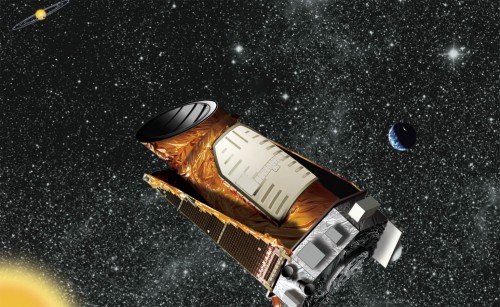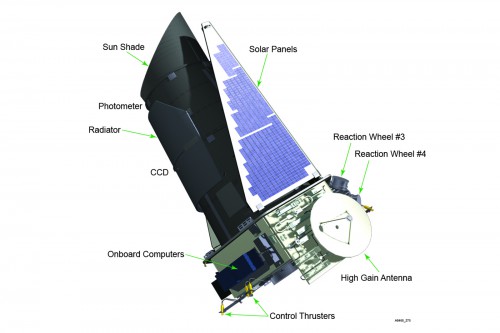
The Kepler space telescope has been nothing short of incredible, revolutionizing our understanding of exoplanets and showing just how common and diverse they really are (as the saying goes, truth is stranger than fiction). Recently, however, additional mechanical problems have started plaguing the mission, threatening to cut it short. The news during the past few weeks has been pessimistic, declaring that Kepler’s planet-hunting days are all but over. But there is still hope, as announced by the mission’s engineering team, that further testing later this month can help to resolve the situation.
The problem lies with Kepler’s four reaction wheels, which provide stability while the telescope examines the stars in its field of view. One of those wheels failed last year, but the telescope can continue to function with only three. When a second wheel failed on May 11, 2013, however, it put the entire mission in jeopardy. Without at least three functioning reaction wheels, the telescope can’t focus on its target stars properly.
From the latest Kepler Mission Manager update (July 3, 2013):
“The engineering team has devised initial tests for the recovery attempt and is checking them on the spacecraft test bed at the Ball Aerospace facility in Boulder, Colo. The team anticipates that exploratory commanding of Kepler’s reaction wheels will commence mid-to-late July. The Kepler spacecraft will remain in PRS until and during the tests.”

Image Credit: Ball Aerospace
So let’s not give up yet, it is still possible that Kepler can be fixed and resume its activities. But even if that doesn’t happen, Kepler has already returned an enormous amount of data, most of which still hasn’t even been looked at in detail yet. Even so, it has already confirmed 134 new exoplanets, with another 3,277 awaiting confirmation. It has also shown that planets are a common and natural part of star formation, and that smaller rocky planets like Earth are probably more numerous than larger gas or ice giants. Not bad at all, considering that not too long ago we didn’t even know if there were any other planets outside of our solar system at all.
This article was first published in The Meridiani Journal.
Want to keep up-to-date with all things space? Be sure to “Like” AmericaSpace on Facebook and follow us on Twitter:@AmericaSpace




if you understand infinite, why did you need a $B satellite to tell you there were other planets out there? Just wondering?
Hi Lloyd,
While we suspected the number of extrasolar worlds – Kepler provided us with far more conclusive and comprehensive data about these worlds. Also, Kepler has told us about some of the “basics” of these planets – to the point where we’re finding ones that are very similar to our own. Kepler has started us down the road of finding worlds like our own.
Sincerely, Jason
Here’s hoping the upcoming reaction wheel restarts work out as planned! Still, it would be great if we had a way to go out to service mechanical failures and/or replenish cryogenic expendables. A multipurpose on-orbit robotic tender/tanker could salvage missions or refurbish lofty assets and pay for itself by doing so? Dexter and the Canada arm have shown us it IS possible..? Where’s that advanced robonaut when you need him?
There is ongoing research into creating orbital refuel/repair craft, yeah. On ISS, they did the Robotic Refuelling Mission, and in 2007 the USAF Orbital Express tests included remote servicing such as removing and replacing a flight computer. So all the technology to do it is there. There is a practical challenge, though, getting a servicing bot into the right orbit expends a lot of fuel over time, so it would itself need to be regularly refueled. (Fuel depot, anyone?)
Of course in the context of Kepler, this is all moot, since it’s not in Earth orbit. A repair mission to Kepler, even if it was designed to be servicable, would cost more than a new telescope.